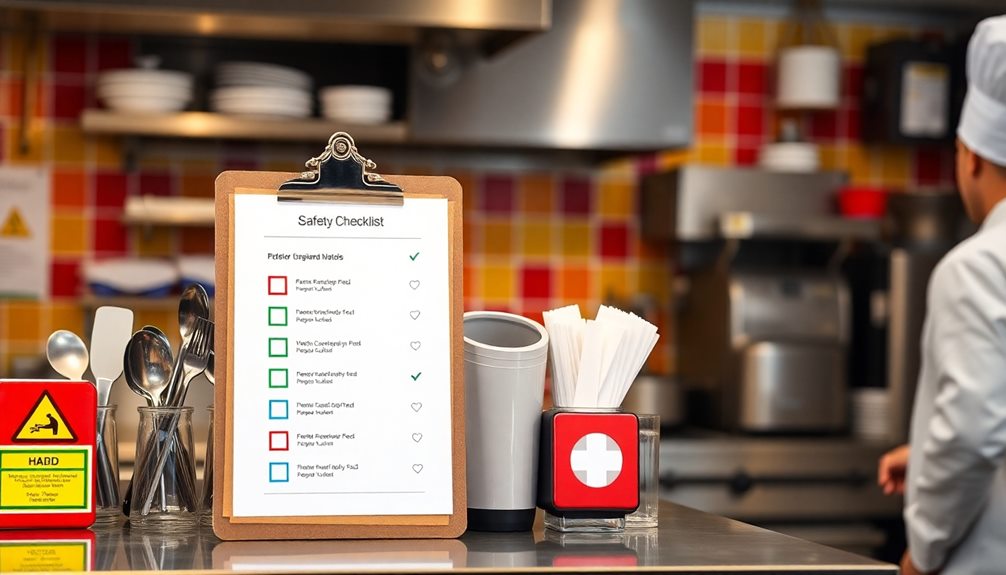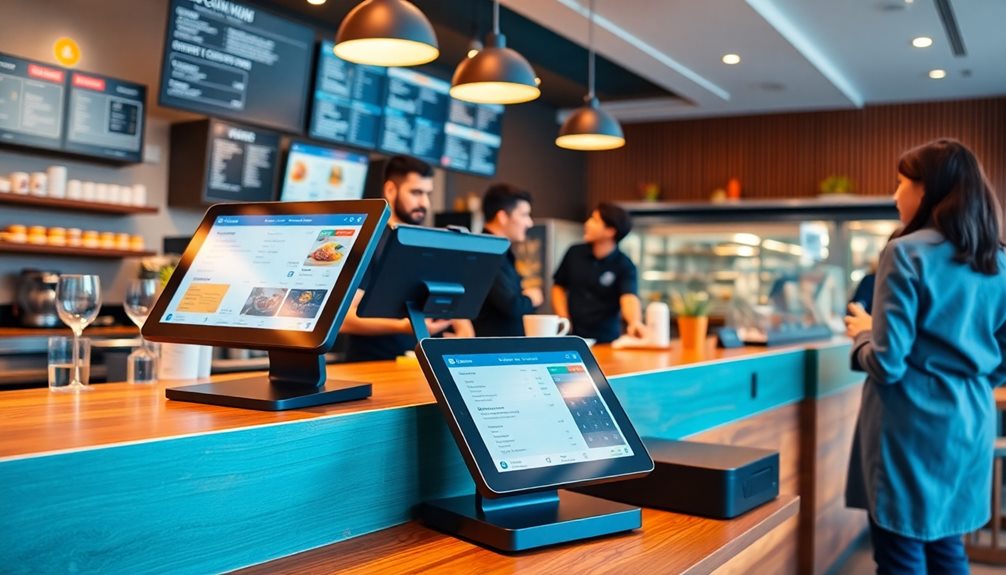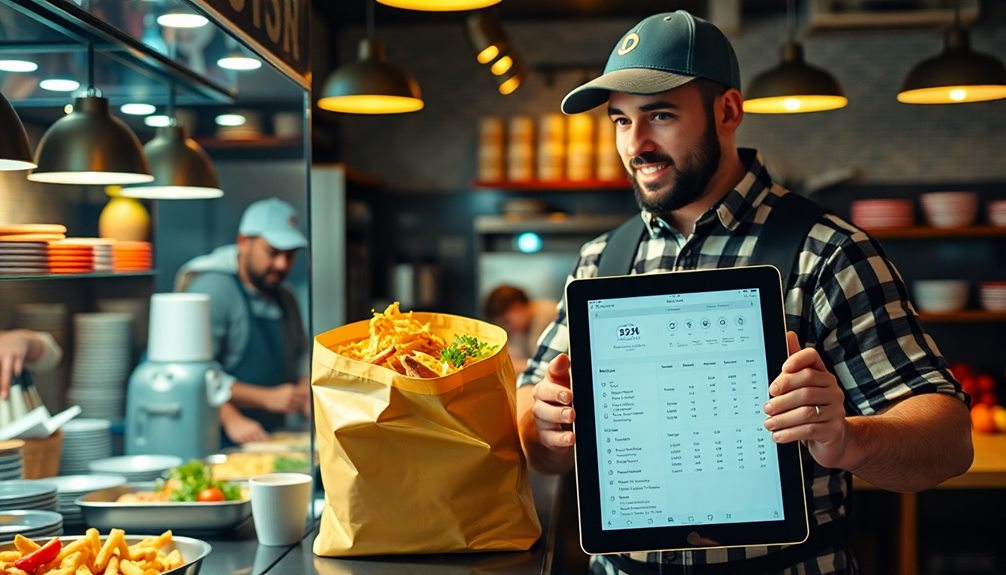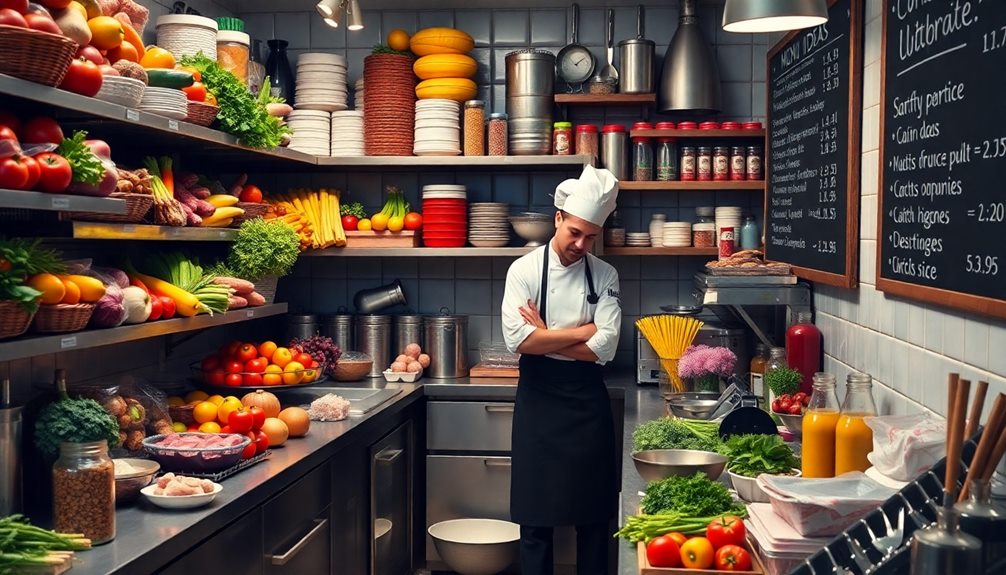To create a restaurant safety manual, start by outlining your general health and safety policy. Identify potential hazards through regular inspections and document safety protocols, including PPE usage and safe work practices. Develop clear emergency response guidelines, detailing evacuation routes and staff roles. Emphasize training by providing sessions for new staff and tracking their progress. Regularly update the manual to reflect changes in procedures and enhance communication among your team. This proactive approach not only protects your employees but also boosts their confidence. Keep going to uncover more effective strategies for ensuring a safe restaurant environment!
Key Takeaways
- Define a comprehensive General Health & Safety Policy that outlines safety goals and assigns responsibilities to staff members.
- Conduct regular Workplace Hazard Assessments to identify and mitigate risks related to equipment, materials, and workstations.
- Establish clear Company Rules that include the use of Personal Protective Equipment (PPE) and safe work protocols for all tasks.
- Develop Emergency Preparedness procedures that include evacuation routes, assembly points, and roles for staff during emergencies.
- Implement a training program that ensures all employees receive regular safety training and understand reporting procedures for safety concerns.
Importance of a Safety Manual
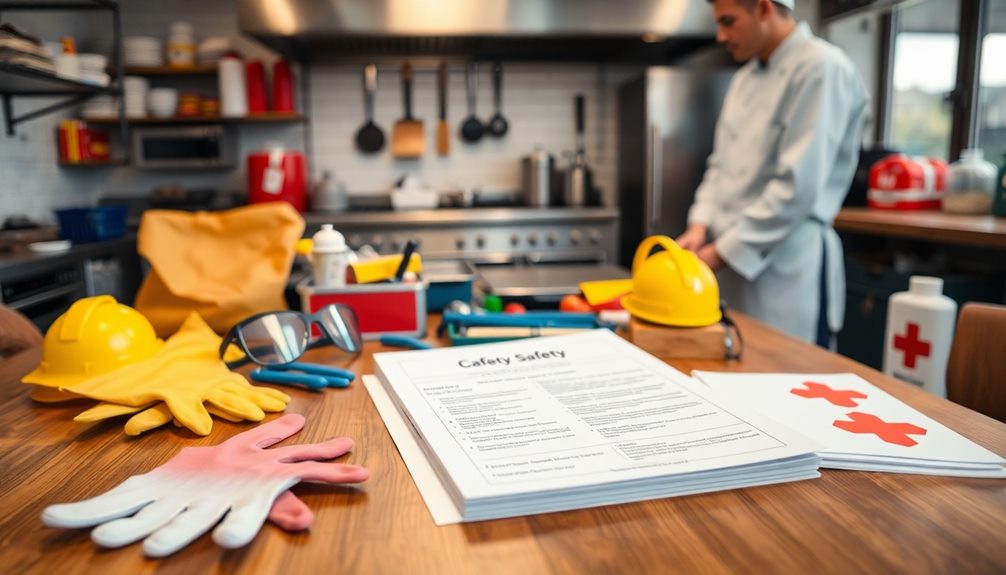
A safety manual is vital for any restaurant, not just for legal compliance but also for the well-being of your staff. By documenting safety procedures and protocols, you create a clear framework that protects your employees from workplace hazards. Compliance with OSHA regulations isn't just a legal obligation; it's a commitment to fostering a safe environment.
Additionally, incorporating elements of effective relaxation techniques can help your staff manage stress and maintain focus in a fast-paced work environment.
A well-structured safety manual enhances communication about safety protocols, making sure every employee knows their responsibilities and the procedures to follow. This clarity reduces confusion and empowers your staff to engage in safe practices, greatly lowering the risk of accidents.
Additionally, when you regularly update your manual, you promote a proactive safety culture within your restaurant. This encourages employees to prioritize health and safety, leading to fewer injuries and illnesses.
Documenting safety procedures also builds employee confidence, contributing to higher job satisfaction and productivity.
Investing in training that revolves around your safety manual guarantees that employees understand the importance of compliance and their role in maintaining a safe workplace.
In short, a thorough safety manual is essential for protecting your employees and creating a thriving restaurant environment.
Key Components of the Manual
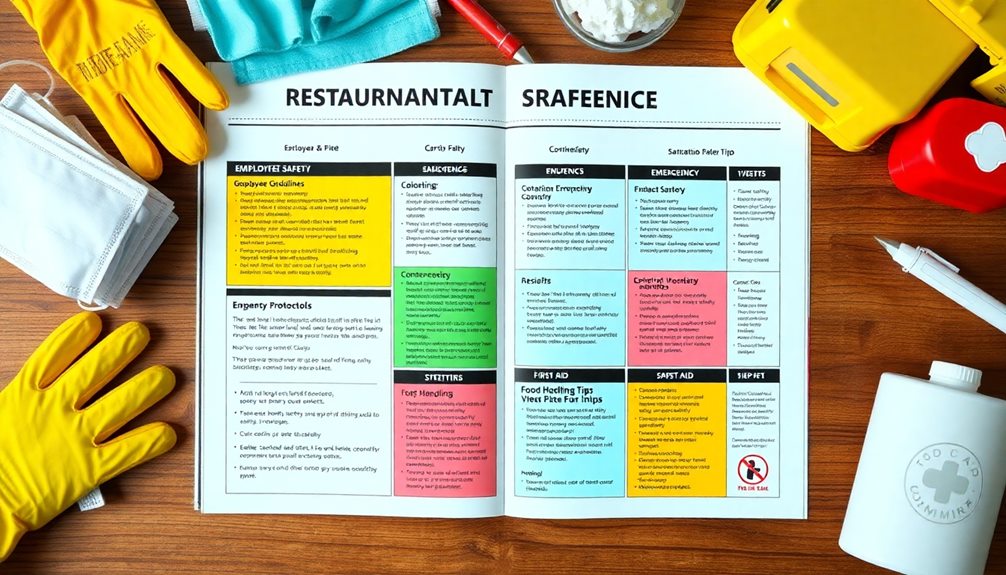
Creating a detailed safety manual involves several key components that guarantee all aspects of workplace safety are covered. Start with a General Health & Safety Policy that clearly defines your safety goals and the responsibilities of everyone involved. Next, include a Workplace Hazard Assessment section, which mandates regular inspections to identify and document potential risks following OSHA guidelines.
Here's a simple overview of these components:
| Component | Description |
|---|---|
| General Health & Safety Policy | Outlines overall safety goals and responsibilities |
| Workplace Hazard Assessment | Requires inspections to identify hazards |
| Company Rules | Establishes safety protocols, including PPE usage |
| Emergency Preparedness | Details procedures for various emergencies |
Also, verify your manual contains Safe Work Practices that outline the correct methods for tasks, reducing injury risk. Don't forget to include a section for Personal Protective Equipment (PPE) and guidelines for employee training manual to keep everyone informed. Finally, your Emergency Preparedness plan should prepare staff for any situation, guaranteeing they know how to respond effectively.
Identifying Potential Hazards
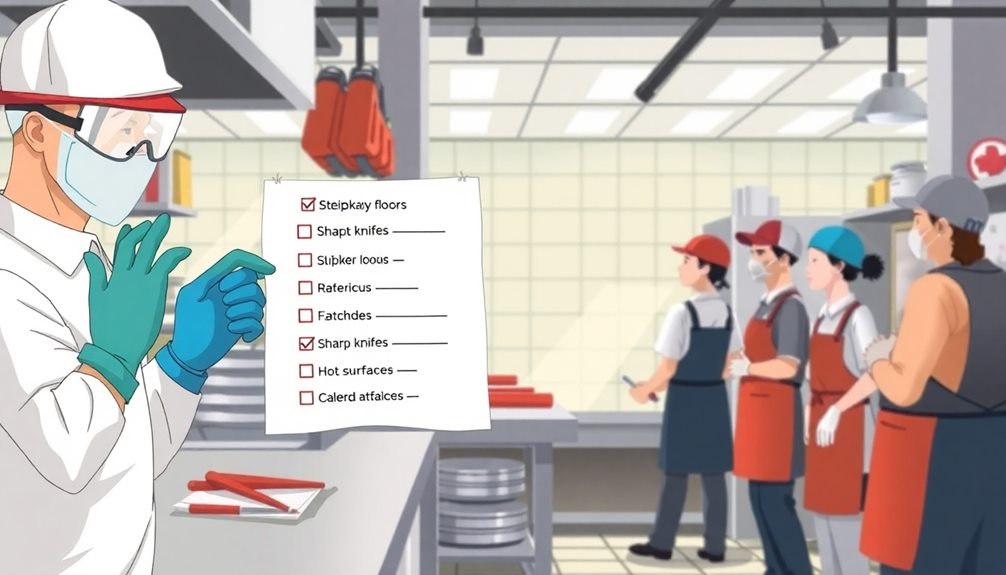
Identifying potential hazards in your restaurant is essential for maintaining a safe working environment. Start by conducting regular inspections to spot issues like slippery floors, uneven surfaces, and inadequate lighting. These factors can lead to accidents and jeopardize workplace safety.
Next, assess equipment usage to guarantee proper operation and maintenance of kitchen appliances and tools. This proactive approach can prevent injuries stemming from malfunctioning or poorly maintained equipment.
Don't forget to evaluate the handling and storage of hazardous materials, such as cleaning chemicals and flammable substances. Make sure these items are clearly labeled and stored safely to minimize risks.
In addition, review employee workstations for ergonomic risks. Look out for repetitive strain injuries caused by improper lifting techniques or awkward postures during food preparation.
Training and Compliance Procedures
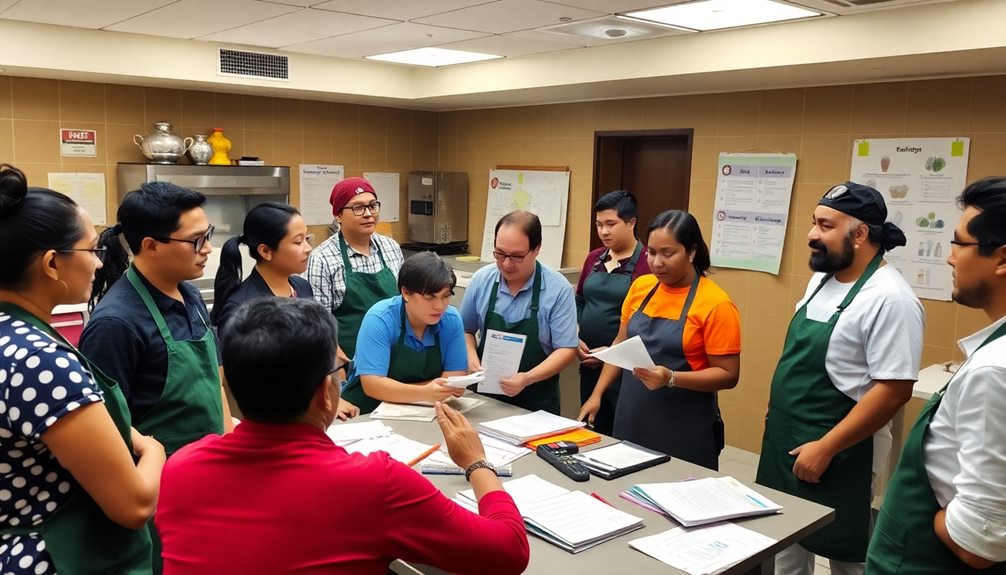
Effective training and compliance procedures are essential for ensuring safety in your restaurant. Start by developing a thorough workplace safety manual that covers specific safety protocols, including food handling, equipment usage, and emergency procedures. This manual should serve as the backbone of your restaurant employee training manual.
Additionally, consider incorporating elements from supporting a partner that emphasize teamwork and shared responsibility in fostering a safe work environment.
When training new staff, emphasize the importance of safety training through regular safety training sessions. This not only reinforces compliance with health and safety standards but also fosters a culture of safety where employees prioritize their well-being and that of their coworkers.
Implement a system to track employee training completion and effectiveness, using assessments and feedback to identify areas for improvement.
Establish clear communication channels for reporting safety concerns, ensuring employees feel safe voicing issues. This shared responsibility helps create an environment where safety is everyone's priority.
Additionally, regularly review and update training materials to reflect changes in regulations, procedures, and best practices. By keeping your training materials current, you equip all staff members with the most relevant safety information, further enhancing your compliance procedures and maintaining a safe restaurant environment.
Emergency Response Guidelines
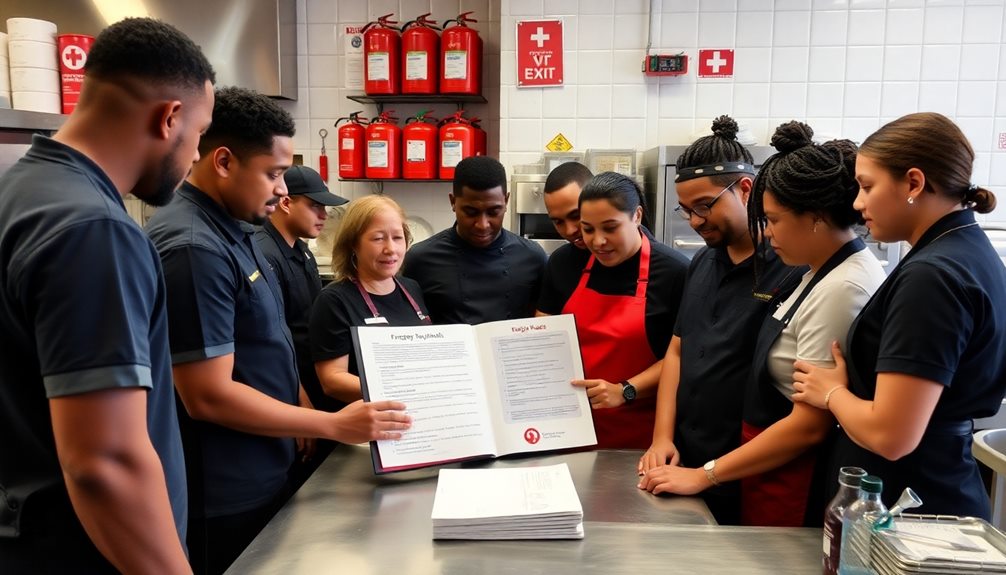
Establishing a thorough emergency response plan is essential for your restaurant's safety. This plan must outline evacuation routes, assembly points, and specific roles for staff during emergencies to guarantee a coordinated response.
Here are three key components to include:
- Emergency Drills: Regularly conduct drills for fires and other emergencies. This helps familiarize your team with procedures and boosts their confidence in handling real situations.
- Communication Protocol: Develop a clear protocol for alerting both staff and guests during emergencies. Utilize alarm systems, public address announcements, and assign designated personnel to relay critical information.
- Emergency Supplies: Confirm your restaurant is equipped with essential supplies like first aid kits, fire extinguishers, and flashlights. Make sure all staff members know their locations and how to use them effectively.
Constantly document and review your emergency response guidelines. Incorporate feedback from drills and real incidents to guarantee continuous improvement and compliance with safety regulations.
Frequently Asked Questions
How to Make a Manual for a Restaurant?
To make a manual for a restaurant, outline policies, conduct hazard assessments, detail safe practices for each role, develop emergency procedures, and regularly update the manual to guarantee compliance and staff safety.
How Do You Create a Safety Manual?
To create a safety manual, you start by evaluating workplace hazards, gather input from staff, and draft clear rules and protocols. Regularly update it to guarantee it remains relevant and compliant with current regulations.
What Is a Safety Manual Form?
A safety manual form's like a superhero for your restaurant, swooping in to save the day! It outlines essential safety policies, procedures, and guidelines, helping you and your team navigate hazards and guarantee a secure environment.
Does OSHA Handle Restaurants?
Yes, OSHA does handle restaurants. They enforce safety regulations to protect employees from hazards, covering areas like food safety and equipment use. You need to guarantee compliance to avoid citations and maintain a safe workplace.
Conclusion
Creating a restaurant safety manual isn't just a task; it's your shield against potential disasters. By putting together a solid guide, you're not only protecting your staff and customers but also fortifying the very foundation of your business. Think of it as a safety net woven from knowledge and preparedness, ready to catch anyone who might stumble. So, take the time to craft this essential tool—your restaurant deserves it, and so do the people who walk through your doors.
